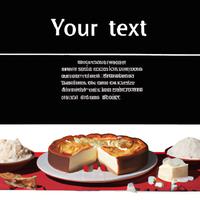
1 serving (100 grams) contains 250 calories, 5.0 grams of protein, 10.0 grams of fat, and 30.0 grams of carbohydrates.

Log this food in SnapCalorie

Nutrition Information
Calories |
595.2 | ||
|---|---|---|---|
% Daily Value* |
|||
| Total Fat | 23.8 g | 30% | |
| Saturated Fat | 11.9 g | 59% | |
| Polyunsaturated Fat | 0 g | ||
| Cholesterol | 71.4 mg | 23% | |
| Sodium | 357.1 mg | 15% | |
| Total Carbohydrates | 71.4 g | 25% | |
| Dietary Fiber | 2.4 g | 8% | |
| Sugars | 47.6 g | ||
| protein | 11.9 g | 23% | |
| Vitamin D | 0 mcg | 0% | |
| Calcium | 238.1 mg | 18% | |
| Iron | 2.4 mg | 13% | |
| Potassium | 190.5 mg | 4% | |
* Percent Daily Values are based on a 2,000 calorie diet. Your daily values may be higher or lower depending on your calorie needs.
Food Attributes
Source of Calories
About Curd cake
Curd cake, originating from Eastern European and Russian cuisines, is a creamy and flavorful dessert made primarily from curd cheese (similar to farmer's cheese or ricotta), eggs, sugar, and flour, often baked to achieve a soft, cheesecake-like texture. Its simplicity allows for variations, with some recipes incorporating vanilla, lemon zest, or dried fruits for added flavor. Packed with protein and calcium from the curd cheese, it can be a nutrient-rich treat when made with minimal added sugar. However, traditional recipes may include significant amounts of sugar, butter, or cream, increasing its calorie and fat content. For a healthier twist, it can be sweetened naturally or prepared with whole-grain flour. Loved for its balance of richness and lightness, curd cake is a satisfying option for dessert enthusiasts who enjoy a blend of tangy and sweet flavors.



